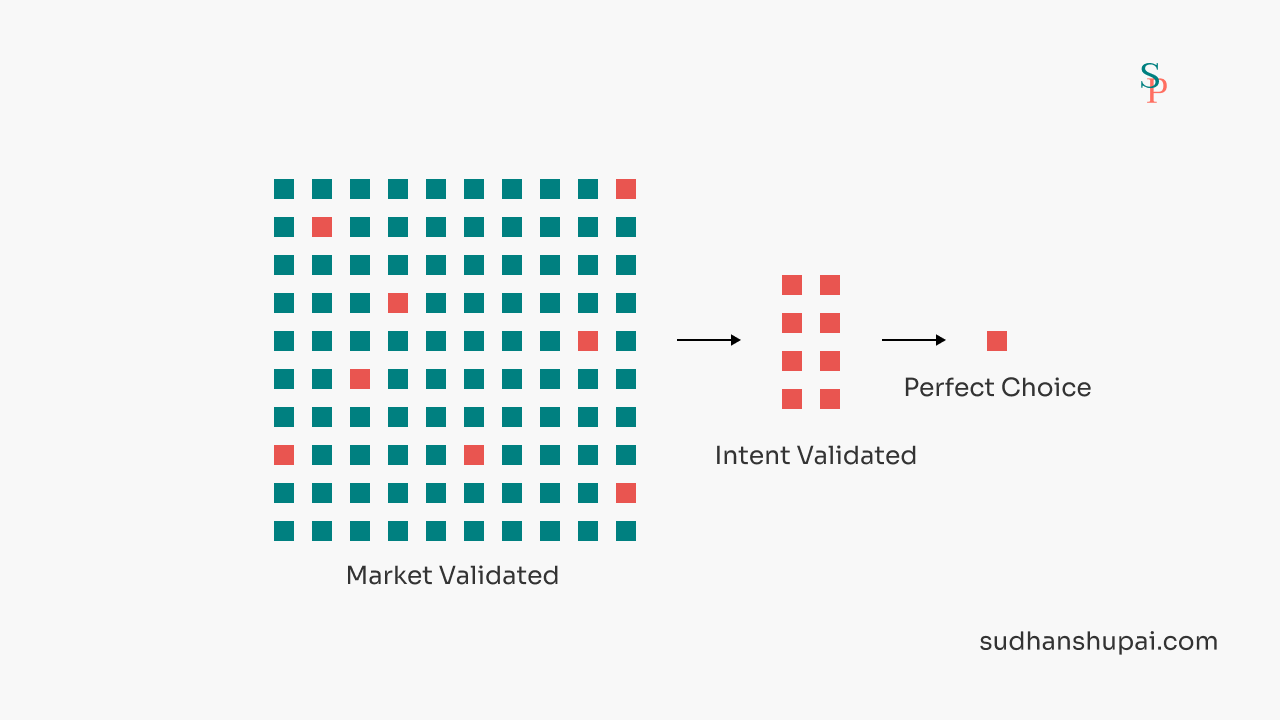The Elimination Framework that finds profitable info products that fit your brand
If you’re like me and overthink an idea storm before building a product or offer, you might have thought about testing a billion ideas before executing one.
I’ve had this urge to bring ideas to life and build life-changing stuff before I ever got in the whole CREATOR deal but I didn’t know where to begin.
But after some research, a bit of trial and error I’ve eventually found a logical workaround that can generate working ideas you can choose from.
Why most entrepreneurs find it difficult
The info product market has become a competitive sport due to a variety of reasons. It’s hard to pinpoint a good info product idea because of one of these 6 reasons.
1. Understanding Target Audience needs
Knowing what your audience has a problem with is one thing, and understanding how they want it solved is another.
Without an accurate understanding of specific pain points and desires deep market research can lead to building something that doesn’t resonate.
2. Managing Expertise and Intent
Another struggle creators often face is the balance between what they are passionate & knowledgeable about, and what their people intend to do with it.
This creates a misalignment between your hunger to use your expertise and what the people actually need. In some cases they don’t need a course, they just might need the solution.
If you are unclear with different types of info products check out
2 categories of info products.
3. Value proposition clarity
You know you have value to give, but if you don’t know how to phrase it and package it in a way that others find it valuable too, you won’t have anything that can be sold.
The people who find it hard to ideate proper products are those who don’t have clarity on their value proposition, which in turn translates to not having clarity on the product’s value proposition.
4. Market Saturation
Everyone these days is trying to monetize with products, most fail and few succeed with this monetization strategy.
But this flooded the market with a ton of similar products, doing the exact same things, which made it difficult to come up with new unique ideas.
5. Brand Alignment
You can build and sell endless products, but think about it… if your brand is about sales coaching, there’s no point in having a product about productivity or content creation.
Similarly, establishing oneself as credible and trustworthy as a creator is time-consuming and requires consistency of messaging and effort. So you don’t want to dilute your brand’s ecosystem with offers and products that have absolutely nothing to do with your brand.
6. Scalability
The last thing you want to do is put your heart and soul into building something, and it only sells once. It’s like a punch in the gut.
Ideating and designing an info product that can flow with increasing demands without compromising quality is a significant challenge.
But don’t worry. Because I’ve already gone through this dilemma for you while finding my flagship product, and I’m going to make this crucial step easy for you to do.
So here’s how I ideate products without drowning in research, information, and overthinking
Before you ideate, you need a few things…
When you want to separate sand, rocks, and pebbles, what do you do? You set up filters.
So we need 2 filters – one that separates rocks (market demand) and one that separates pebbles (market intent)
These come in the form of primary and secondary market research. If you haven’t already done so, you should leave this issue and take a look at
- Primary Research – 5 steps to study your customer.
- Secondary research – 5 signals validate your product idea
it will save your time, help you work faster, and reduce your chances of walking down the wrong path all while keeping your audience’s needs in mind.
The Elimination Framework for Ideating Info Products
You’ve probably heard this saying in the online writing world – “It’s hard to edit a blank page, let me tell you that this is true for more than just writing.
Ideating and Creating is hard because we try to operate from a clean sheet, without a database to sort from or without a template to guide us.
This method works in the same principle as elimination and deduction.
Step 1: List out all possible right answers

The easiest thing people can do about any given situation is “assume”, you could even go as far as saying that assumption is a survival instinct.
It comes naturally to us, so use that skill to ideate as many product ideas you can, that you think are the right answer.
The longer the list the better.
Step 2: Build a filter of Secondary research data

When you have a large set of market data, you’ll know what people want.
But this is going to be the generalized market data that will help you understand the market demand, so you can focus on what people want.
Step 3: Get rid of options that don’t align with the filter

The moment you have your secondary research data ready, take that data as parameters and run each of your product ideas through them.
Keep the idea that fits those parameters and strike out those that don’t.
This should narrow down your product ideas to market demand-ready ideas.
Step 4: Build a filter of Primary research data

Your narrowed list is based on market demand. But differentiation doesn’t come from making something that the market demands.
It comes from making something that the market needs underlying to those demands. This comes from the “JOBS TO BE DONE” Philosophy that Katelyn Bourgoin is known for.
Primary research filters out the “what” from the “when and how”.
Step 5: Get rid of the options that don’t fit the primary research filters

The moment you apply this filter, you should end up with a list of product ideas that are not only market validated but intent-validated.
An intent-validated product idea is way more powerful, clear, and authority-generating product idea because now you can differentiate it easily.
And it can put you on the map.
Step 6: Run a survey or poll

With a narrowed-down list of product ideas, run a public survey.
Your X, Instagram, or Newsletters can play an important role here.
And you don’t need to be fancy with a form here, just present them with 3 options at a time and ask them 1 simple question
“What would you like me to make the most out of the list?”
if you’ve done your research right, you’re people will give you the answer that pains them the most.
Conclusion
Understanding the difference between market demand and market intent is crucial for creating a relevant and sellable product that scales and sells itself. And it might just help you create a flagship product that puts you on the map.
Use tools like Chat-GPT, Google Forms, and other research tools to gather ideas, filter them with insights, and turn your validated idea into a product to help your prospective audience.
When you start thinking from abundance, you’ll find it a lot easier to ideate products and offers on the fly, than spending hours just staring at a blank screen with no idea what to do.
I hope this is helpful.
Happy Building.
This is one of many lessons and templates inside of The Info Product Builder Kit. It’s a complete replicable plug-and-play roadmap on building brand-aligned, flagship info products that expand your brand ecosystem and help you earn more with your expertise. The kit is designed to help you save time, avoid mistakes, and leverage speed to build info products that grow your brand and business.

